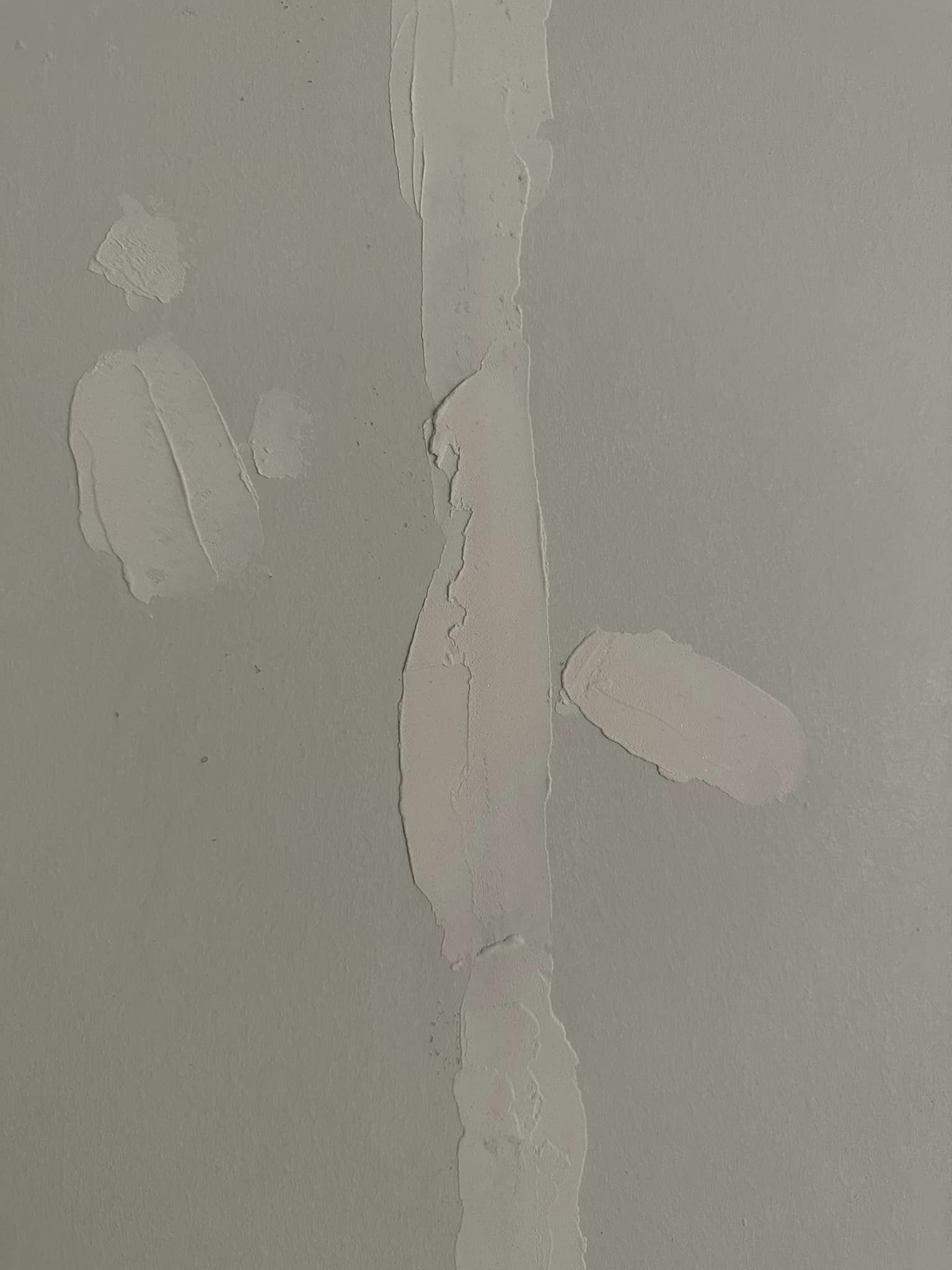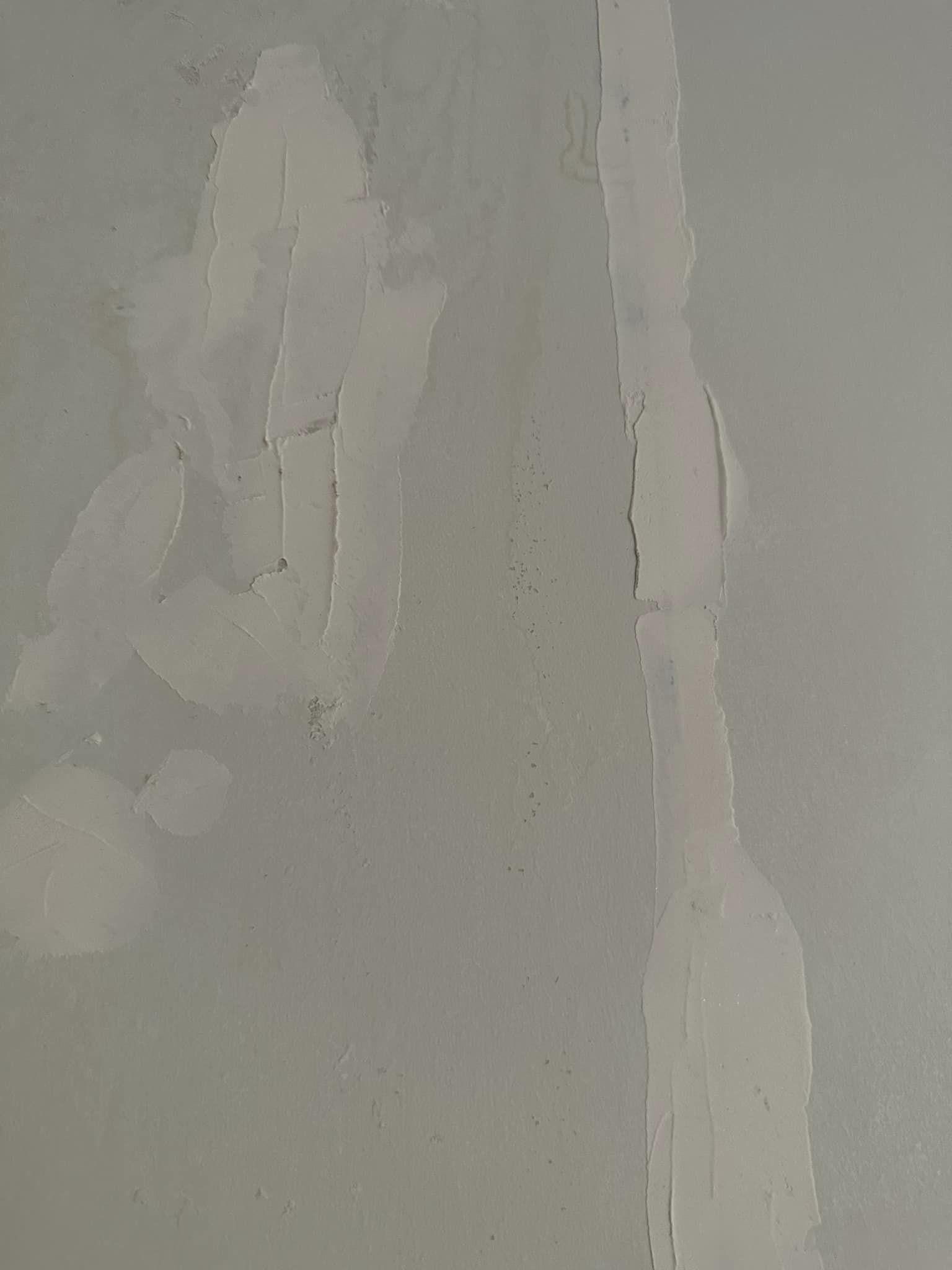What size grit should I use on my orbital sander to smooth down my husband’s excess hole filler?
9 months ago
Last Updated: September 19, 2024
I posted a separate question because I’m hoping for a quick answer. What grit size should I use on an orbital sander to smooth out my husband’s excessive hole filler/drydex/mud application?


220 grit
He clearly wanted to ensure you never had to ask him to do that again.
Avoid using a sander designed for wood, as it will quickly become clogged, requiring numerous sanding discs. Opt for a sanding screen instead, even a manual one will suffice. Look for one with an extended handle, step back from the wall, and you’ll be able to sand a large area with minimal body movement (similar to painting with a roller).
However, if the joint compound is standard thickness, you can achieve a smooth finish using a damp sponge without creating any dust. Check the packaging for recommendations on using a sponge.
Silly question perhaps… but what exactly is a sanding screen? How does it differ from a sanding block or sandpaper? And does it connect to the same pole as the paint roller (if I’m understanding your suggestion correctly… I might be wrong lol)
Make sure to grab a few packs of each grit level for these sanding screens. Start with the lowest number and move your way up – the first one will get your surface nice and flat, while the others will help smooth out any scratches left behind.
Pair these with the drywall pole sander, and I’d suggest getting a telescoping handle to go with it for easy extension and retraction. You can find it in the paint section, it’s red and black!
I honestly don’t think DIY is your thing. Google is a great resource to check out. A sanding screen is pretty much what it sounds like – it resembles a window screen with rectangular strips and round options for circular sanders. They can be used on the same tools as regular sandpaper. The sanding screen is specifically designed for joint compound because the holes are large enough to prevent clogging. I recommend trying a wet sponge first if the joint compound was applied too heavily, or else you’ll be sanding for days. And yes, the extension poles are universal.
None of us were born knowing what a sanding screen is, we all had to learn at some point. It doesn’t mean someone is better or worse at something just because they learned it sooner.
Freddy Jentzsch so rude? This is a platform for asking questions. Why is it not acceptable to inquire about the reasoning behind using a sanding screen from the person who recommended it and also receive more information to understand why they specifically suggested it?
Freddy Jentzsch damn… clearly she’s attempting to learn. Show some kindness man, we all have to start somewhere. Ignorance is not stupidity… it’s a lack of information and she is definitely asking the right questions to prevent making things worse
Freddy Jentzsch 🙄🙄🙄
There’s always that one person…
I am not really cut out for DIY, as I just started two weeks ago trying to learn? During this time, I managed to put up cabinets, a microwave, a box, California patched drywall, figured out how to prep the drywall paper that got messed up, applied knock down texture, fixed a pipe, and now I own a plumber’s key …
yes, I did google it. But, since it was recommended, I thought it made sense to ask the person who recommended it. I was trying to see if the items I already have would do the job.
This is a DIY page, not just for professional contractors… and I believed it was a place to seek answers.
I teach art to students of all levels. I’ve had 70-year-old students and I would never discourage them from trying just because they asked a question. Questions are essential for acquiring knowledge. No one is born with all the knowledge and skills in their head. It takes time and practice.
Try toning down the criticism of a question, or maybe just keep it to yourself next time. I am currently dealing with a fire recovery and already have enough battles to fight with the insurance company… I don’t need more here.
Sure, avoid using a sander.
I’m not a pro, so it might be best to get some help from others. Let’s try using a hand scraper first and then sand it down for a smoother finish. I don’t think a grinder is suitable for drywall.
If you need to smooth things out, an orbital sander with 220-grit could work. Just be careful not to overdo it. It’s best if your sander has a port for a shop vac, but if not, you can always attach the floor attachment to the shop vac to catch most of the dust. And for those who advise against using a sander, how else do you think professional tapers get the job done? They use a drywall sander with a vacuum attached.
Maybe have him check out a video on applying drywall mud before attempting a finish coat. Or just do it yourself…LOL
Oh yeah, I’ve taken charge of it.
’t opt for an orbital sander. Go for a block sander and do it manually.
Start with an 80-grit pole sander, then do another skim coat using drabond easy sand, and finish by sanding with 120-grit.
First off, avoid using drydex tape. It’s best for small nail holes and nail pops. Make sure to apply it tightly.
Yeah, my husband tackled that part 😳🙄. My spackling is smoother. Haha. I’m really trying to dive in and learn…
A standard drywall sanding block should do the trick.
Use a moist sponge.
Hey there, ^^^^^This
Dealing with the aftermath of overzealous spackling can be quite fun! To ensure a smooth finish without damaging the wall, consider starting with a medium-grit sandpaper such as 120-grit. Once it’s mostly even, switch to a finer grit like 220. Remember to sand gently to avoid creating new imperfections!
Robert
I appreciate the advice, especially about using a damp sponge. I usually have a light touch when filling holes because I’m used to working with many layers as a fine artist painter. He may have been a bit too enthusiastic with it.
Make sure he avoids using drywall mud in the future, please.
Oh no way. He’s not allowed. He can make me dinner. And I’ll fix the walls 😆😆🤷🏼♀️🤦🏼♀️😉
Oh absolutely!
I’d go with the sponge method
Either a wet sponge or a drywall sanding block should do the trick. You don’t really need to use an orbital sander or anything too intense
You can find mesh drywall sanding screens for the hand vacuum sander in 120 and 150 grit options.
It could benefit from an additional layer of mud prior to sanding
Opt for a generously moist sponge
Begin by dampening a sponge
I see his technique in action!
Use a 6″ wide drywall trowel to scrape it down….start by removing the ridges, it will make the process go smoothly and quickly….start there.
Next, consider getting some 180 grit sandpaper to hand sand down the major height differences.
I wouldn’t suggest using a power sander for this kind of project…especially not for an area this size. You might end up damaging the drywall paper, leading to additional repairs.
Moving on, grab a 12″ drywall trowel and apply thin connecting skim coats to even out the filled area. Remember to always trowel/skim off ‘ridges’….it’s better to have a small hole or line crevice than a ridge…you can easily fill it in later in the day…always aim for a flat finish. This will simplify your work and improve the final outcome. 🙂
Remove any high points and use 120-150 grit sandpaper. Avoid applying excessive pressure and let the sander do the heavy lifting.
Consider getting a wet sander for less dust and aim to scrape closer when you apply mud next time 😬
I didn’t do this, Alisha Burklund. My work is smooth and consistent.
Recommends using something like this to keep the dust down. However, she suggests trying to scrape off any excess first.
Hey Alisha Burklund, thank you!!
Try sanding it with a slightly damp sponge, not too wet. Aim for a smooth finish with fewer lumps. Then add more spackle. If unsure about what needs to be filled in, a larger blade can be helpful. Personally, I like using a 12 inch mud pan with a 10 inch blade for this kind of task.
I prefer using a screen.. just make sure not to let it dry too thick
The first thing you should do is ban him from ever using the blade again.
Yeah… he got demoted in DIY home projects. Love him, but as an artist, when I saw his work, I cringed a lot! 😉😆🙄🤷🏼♀️
Just try using a damp cloth 😉
Forget about 36. 120 grit sandpaper should work just fine.
If you use an orbital sander, make sure to lightly dampen the sponge or block. You may need to apply two additional coats when you remove it, lol.
Oh, that’s a lovely textured appearance! 😍
I sensed a deep sigh
Oh yeah!! You should have seen the piece of wallpaper in the kitchen he took off… two years later, still waiting for the rest to follow. Lol
You could probably scrape off around 90% of that with a knife, haha